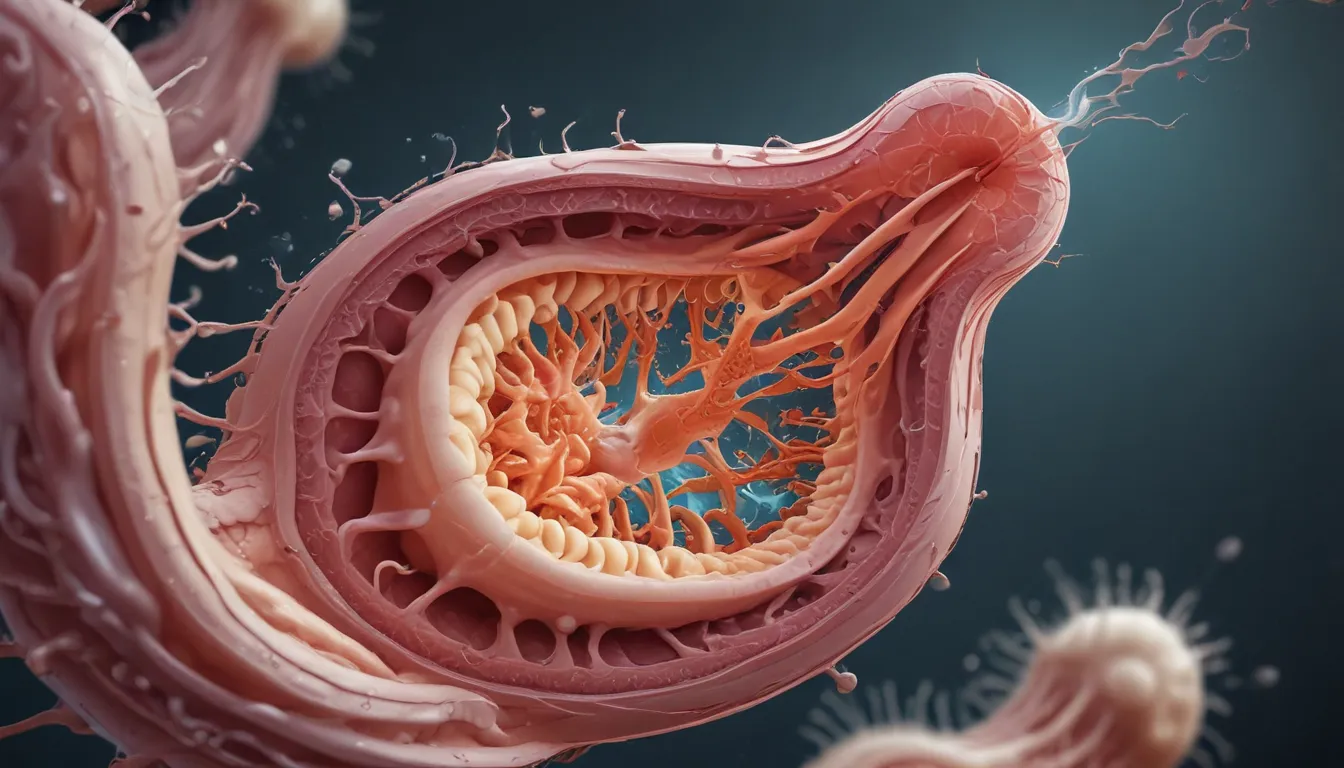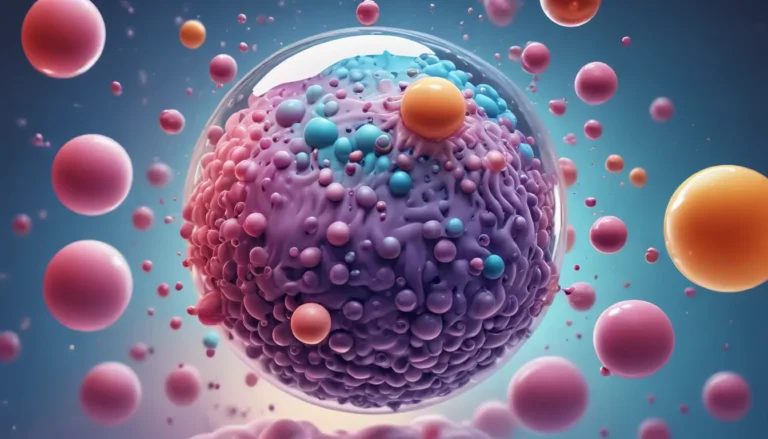A Note About Images: The images used in our articles are for illustration purposes only and may not exactly match the content. They are meant to engage readers, but the text should be relied upon for accurate information.
Are you ready to embark on a journey into the fascinating world of the endoplasmic reticulum (ER)? This organelle, found in all eukaryotic cells, is a powerhouse of cellular activity, playing a crucial role in a myriad of processes essential for cell health and function. From protein synthesis to lipid metabolism and calcium storage, the ER is a multitasking superhero within our cells, ensuring everything runs smoothly.
Unlocking the Mysteries of the Endoplasmic Reticulum
Let’s dive deep into the intricate workings of the endoplasmic reticulum and explore twelve astonishing facts that will broaden your understanding and appreciation of this remarkable structure.
1. The Extensive Branching of the ER
One of the defining features of the endoplasmic reticulum is its complex network of tubules and sacs that branch and extend throughout the cell’s cytoplasm. This branching pattern provides a vast surface area for cellular processes to take place, allowing for efficient protein synthesis, lipid metabolism, and more.
2. The Two Faces of the ER: Rough and Smooth
The endoplasmic reticulum is composed of two main types: the rough ER (RER) and the smooth ER (SER). The rough ER, studded with ribosomes, is involved in protein synthesis, while the smooth ER, lacking ribosomes, plays a key role in lipid metabolism and detoxification processes.
3. Protein Production in the RER
As its name suggests, the rough ER is the site of protein synthesis within the cell. Ribosomes attached to the rough ER produce proteins that are essential for various cellular functions, including secretion and membrane insertion.
4. Lipid Metabolism in the SER
On the other hand, the smooth ER focuses on lipid metabolism, synthesizing lipids, detoxifying drugs and toxins, and storing calcium ions. Its smooth surface allows for the efficient processing of lipid molecules essential for cell health.
5. The Art of Protein Folding
Proteins synthesized in the rough ER undergo a crucial process known as protein folding. This process ensures that proteins attain their correct three-dimensional structure, crucial for their proper functioning within the cell.
6. Quality Control Mechanisms in the ER
The endoplasmic reticulum has sophisticated quality control mechanisms to recognize and remove misfolded proteins. By maintaining the integrity of the cellular protein pool, the ER plays a vital role in preventing the accumulation of faulty proteins that could disrupt cellular function.
7. The ER’s Role in Calcium Homeostasis
Acting as a calcium storage site, the endoplasmic reticulum regulates calcium levels within the cell. It releases calcium into the cytoplasm when needed and sequesters it back into its chambers during calcium signaling events, maintaining a delicate balance crucial for cellular health.
8. Connection to the Nuclear Envelope
The endoplasmic reticulum is intricately connected to the nucleus via the nuclear envelope, allowing for the seamless exchange of membranes and molecules between these two vital cellular structures. This connection facilitates essential communication and coordination within the cell.
9. Formation of Lipid Droplets
Lipid droplets, specialized organelles involved in lipid storage, rely on the endoplasmic reticulum for their formation. The ER supplies the necessary lipids that are encapsulated within these droplets, contributing to the cell’s energy balance and lipid storage capacity.
10. Essential for Drug Metabolism
The smooth endoplasmic reticulum contains enzymes that play a crucial role in drug metabolism and detoxification processes. By metabolizing drugs and making them more water-soluble, the ER aids in their elimination from the body, contributing to overall health.
11. Central Role in Cell Signaling
Participating in various cell signaling pathways, the endoplasmic reticulum houses receptors and channels essential for processes such as calcium release, lipid signaling, and cellular responses to external stimuli. Its involvement in cell signaling underscores its importance in coordinating cellular activities.
12. Dynamic and Adaptable Nature of the ER
The endoplasmic reticulum is a highly dynamic organelle capable of adapting to changes in cellular conditions. Its ability to modify its structure and function allows it to efficiently respond to different physiological states, ensuring optimal cellular function and adaptation.
Through these twelve astonishing facts, we gain a deeper appreciation for the crucial role of the endoplasmic reticulum in maintaining cellular homeostasis and overall organismal health. From its involvement in protein synthesis to drug metabolism and cell signaling, the ER’s versatility as a cellular organelle is truly awe-inspiring.
Unlocking the Secrets of the Endoplasmic Reticulum
In conclusion, the endoplasmic reticulum stands as a cornerstone of cellular function, orchestrating a symphony of processes essential for cell health and vitality. By delving into the complexities of the rough and smooth ER, we unravel the intricate tapestry of cellular life, highlighting the ER’s indispensable role in cellular processes.
FAQs: Exploring Further Into the Intricacies of the ER
- What is the endoplasmic reticulum, and what role does it play in eukaryotic cells?
The endoplasmic reticulum is an organelle found in eukaryotic cells that is involved in protein synthesis, lipid metabolism, and calcium homeostasis, among other crucial cellular processes.
- What are the two main regions of the endoplasmic reticulum, and how do they differ?
The endoplasmic reticulum consists of the rough ER, involved in protein synthesis, and the smooth ER, specializing in lipid metabolism and detoxification processes.
- How does the endoplasmic reticulum contribute to protein folding within cells?
Proteins synthesized in the rough ER undergo protein folding, a critical process that ensures proteins acquire their correct three-dimensional structure for optimal functionality.
- What role does the smooth endoplasmic reticulum play in lipid metabolism?
The smooth ER is central to lipid metabolism, synthesizing lipids, aiding in drug detoxification, and regulating calcium levels within the cell.
- How does the endoplasmic reticulum impact cellular communication and signaling pathways?
The endoplasmic reticulum houses receptors and channels involved in various signaling pathways, including calcium release, lipid signaling, and cellular responses to external stimuli, essential for coordinating cellular activities.
- Can the endoplasmic reticulum be found in prokaryotic cells?
No, the endoplasmic reticulum is unique to eukaryotic cells and is not present in prokaryotes.
- What are the consequences of endoplasmic reticulum dysfunction within cells?
Malfunctions in the endoplasmic reticulum can lead to disorders and diseases, such as ER stress-related conditions and metabolic disorders, impacting cellular health and function.
- Does the endoplasmic reticulum have the capacity to repair itself after damage or stress conditions?
Yes, the endoplasmic reticulum can regenerate and repair itself, ensuring optimal cellular function and health despite external challenges.
- Are there specific drugs or treatments that target the endoplasmic reticulum for therapeutic purposes?
Yes, various drugs and treatments target specific functions of the endoplasmic reticulum, such as protein folding, lipid metabolism, and calcium regulation, offering promising avenues for therapeutic intervention.
- How has the study of the endoplasmic reticulum contributed to scientific advancements in cell biology and medicine?
The study of the endoplasmic reticulum has led to significant advancements in our understanding of cellular processes, protein folding mechanisms, disease mechanisms, and drug development, highlighting its critical importance in advancing scientific knowledge and medical treatments.
As we continue to unlock the secrets of the endoplasmic reticulum and explore its multifaceted functions, we gain valuable insights into the intricate world of cellular biology, paving the way for cutting-edge discoveries and advancements in scientific research. Join us on this fascinating journey as we delve deeper into the wonders of the microscopic universe within our cells.






